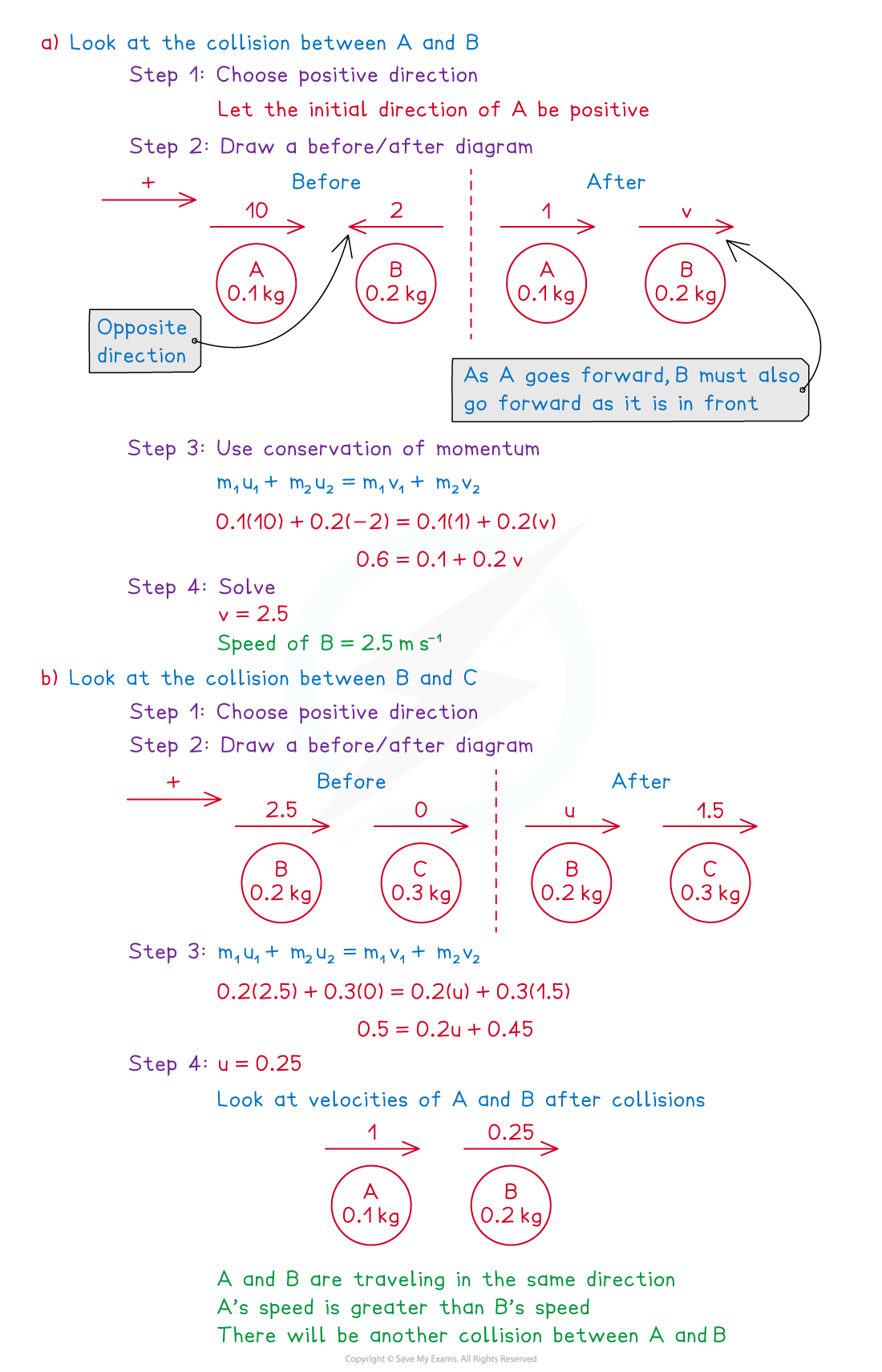Multiple Collisions (Edexcel International A Level (IAL) Maths): Revision Note
Exam code: YMA01
Did this video help you?
Collisions - Multiple Collisions
Can there be multiple collisions?
After two objects collide it is possible that one (or both) of them collides with something else such as
A third object
A wall (perpendicular to the motion)
Deal with each collision separately and use the steps for direct collisions
Can there be a second collision between the original two objects?
Let A, B and C be three objects travelling in the same straight line and suppose A and B collide directly and subsequently B and C collide directly
After the collisions between A and B and B and C there will be a second collision between A and B if:
One is stationary and the other is travelling towards it
Both are travelling in opposite directions towards each other
Both are travelling in the same direction and the one in front is slower than the one behind
The process is similar if object C is a wall
After B collides with the wall its direction will be reversed so it will be travelling towards A
B will collide with A again if its velocity in that direction is greater than the velocity of A in that direction
To help you work out the speed of B after hitting the wall you will be given extra information such as the impulse exerted by the wall or the coefficient of restitution
Worked Example
Three uniform balls and
of equal radius, and mass 0.1 kg, 0.2 kg and 0.3 kg respectively, can move along the same straight line on a smooth horizontal table with
in the middle of
and
.
and
are projected towards each other in opposite directions with speed
and
respectively while
is at rest.
and
collide directly which does not change the direction of motion of
and subsequently
moves with speed
.
(a) Show that the speed of immediately after it collides with
is
.
(b) In the subsequent motion, collides directly with
. Immediately after this collision,
moves with speed
. Determine if there will be a second collision between
and
.
Answer:

Examiner Tips and Tricks
These questions can be difficult to visualise in your head so draw simple diagrams to show each collision.
Use common sense, think how many possible (or impossible) ways there are for objects to move after the first collision. You will often have to consider the speed of one or more objects to decide if a second or third collision is possible.
These questions can involve lots of algebra, negatives and inequalities so do not rush them as you might make a silly mistake which can affect subsequent parts.

Unlock more, it's free!
Did this page help you?